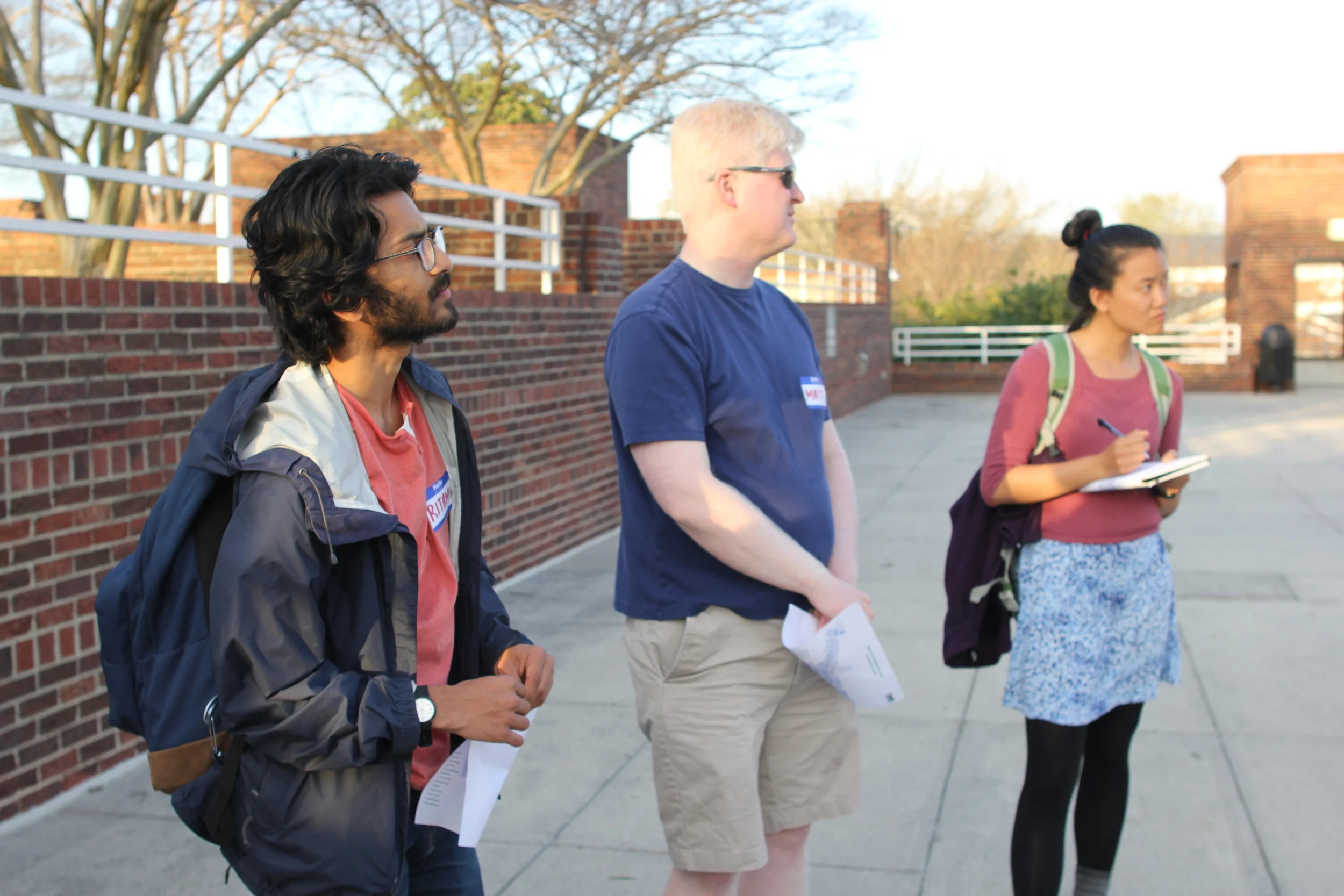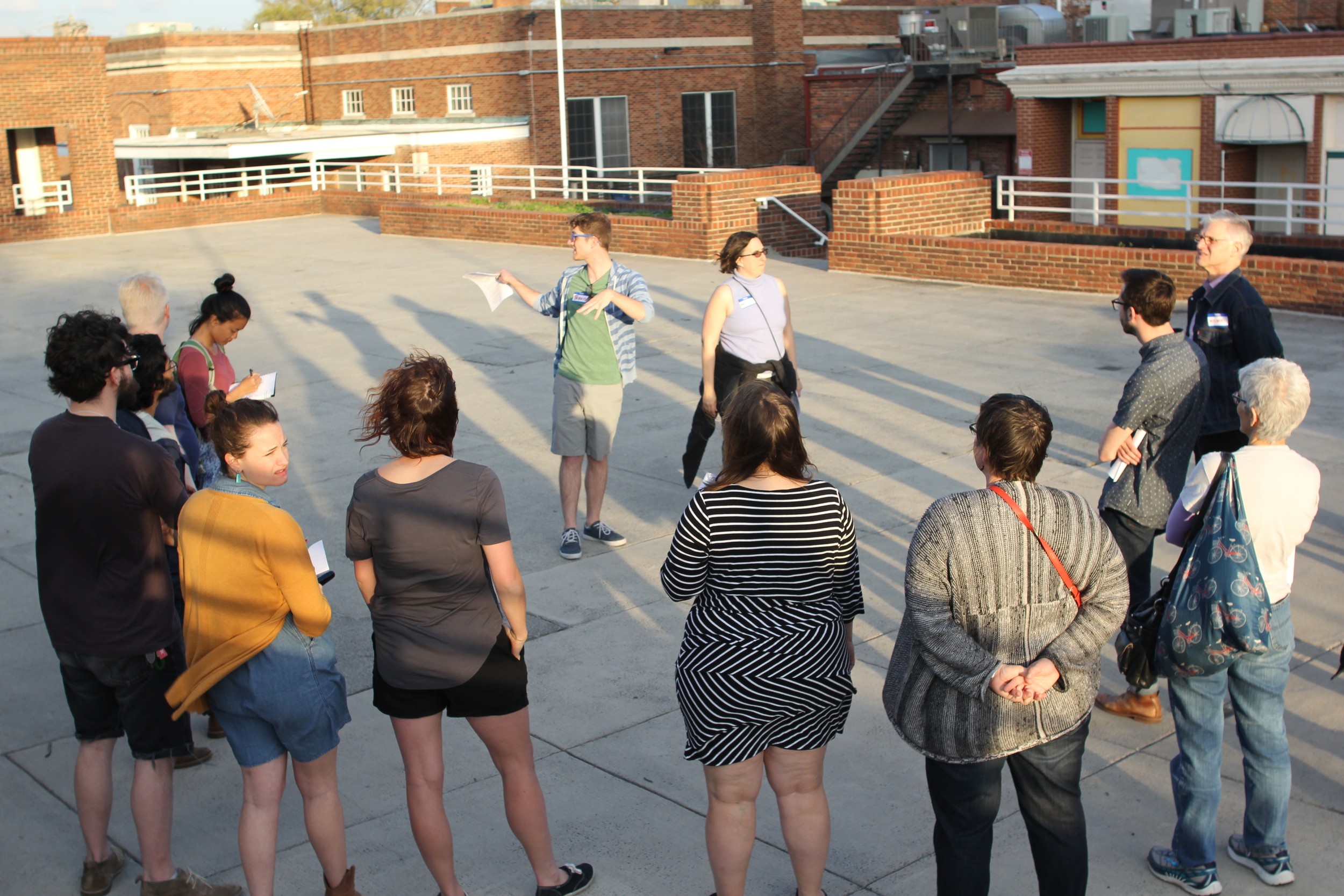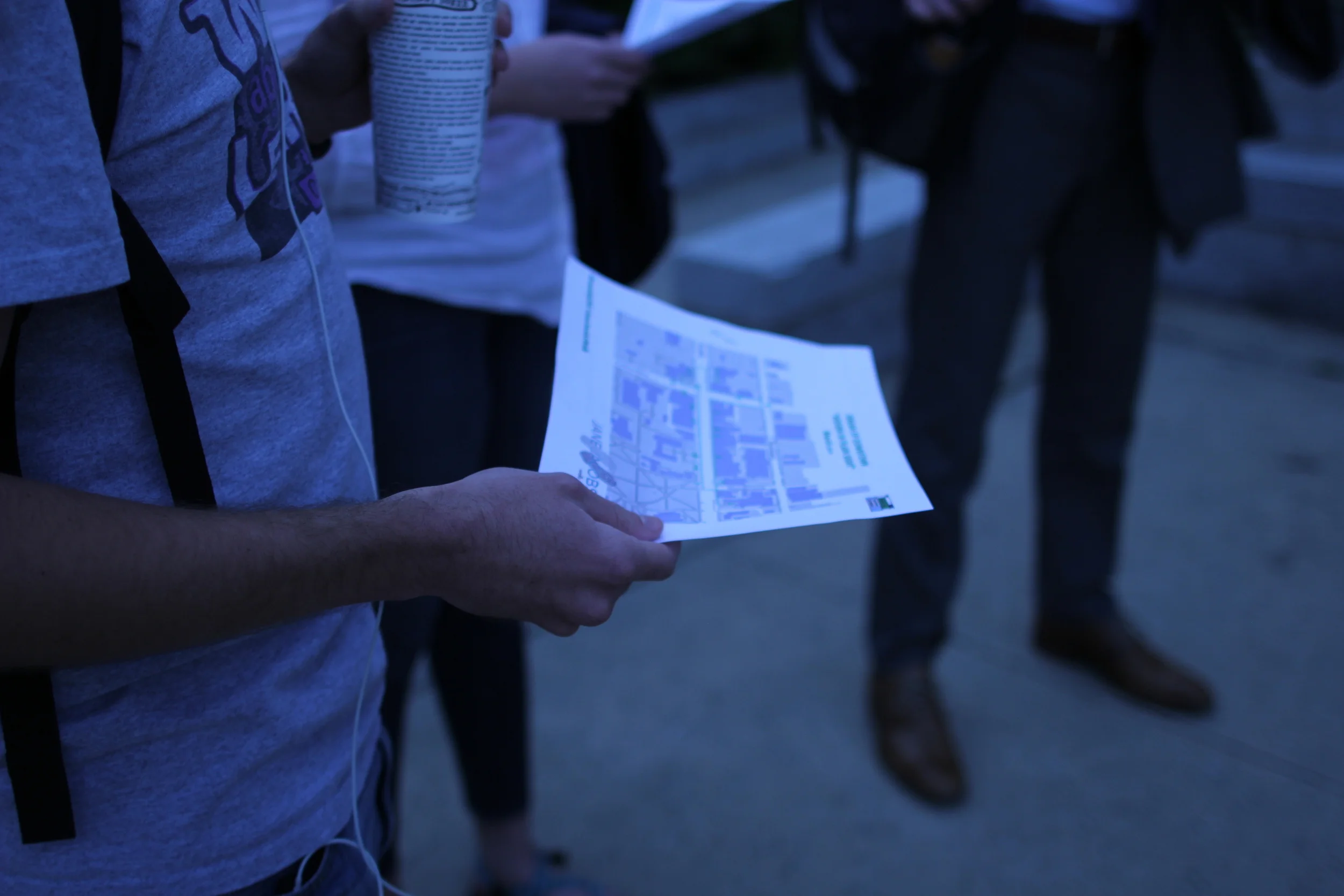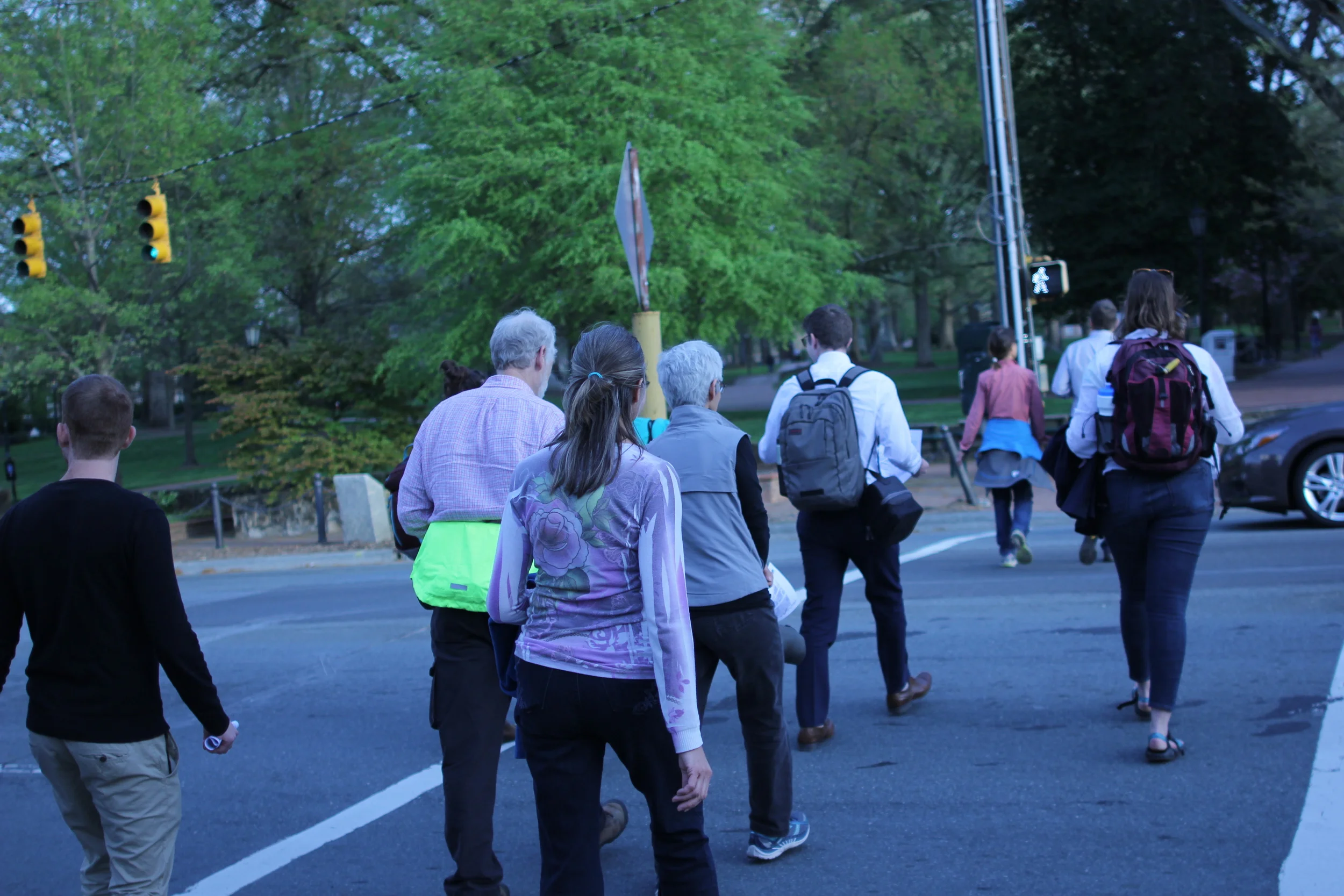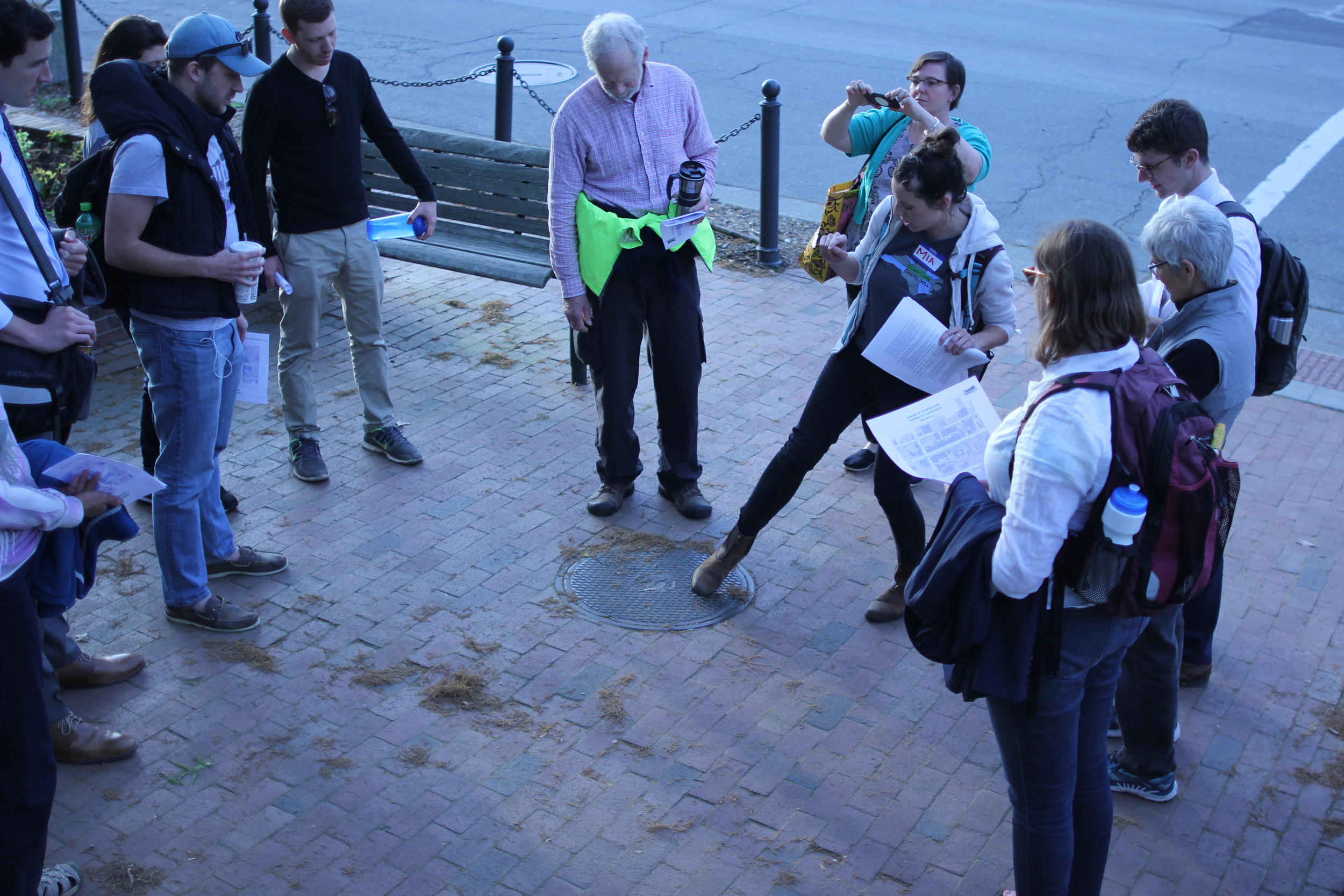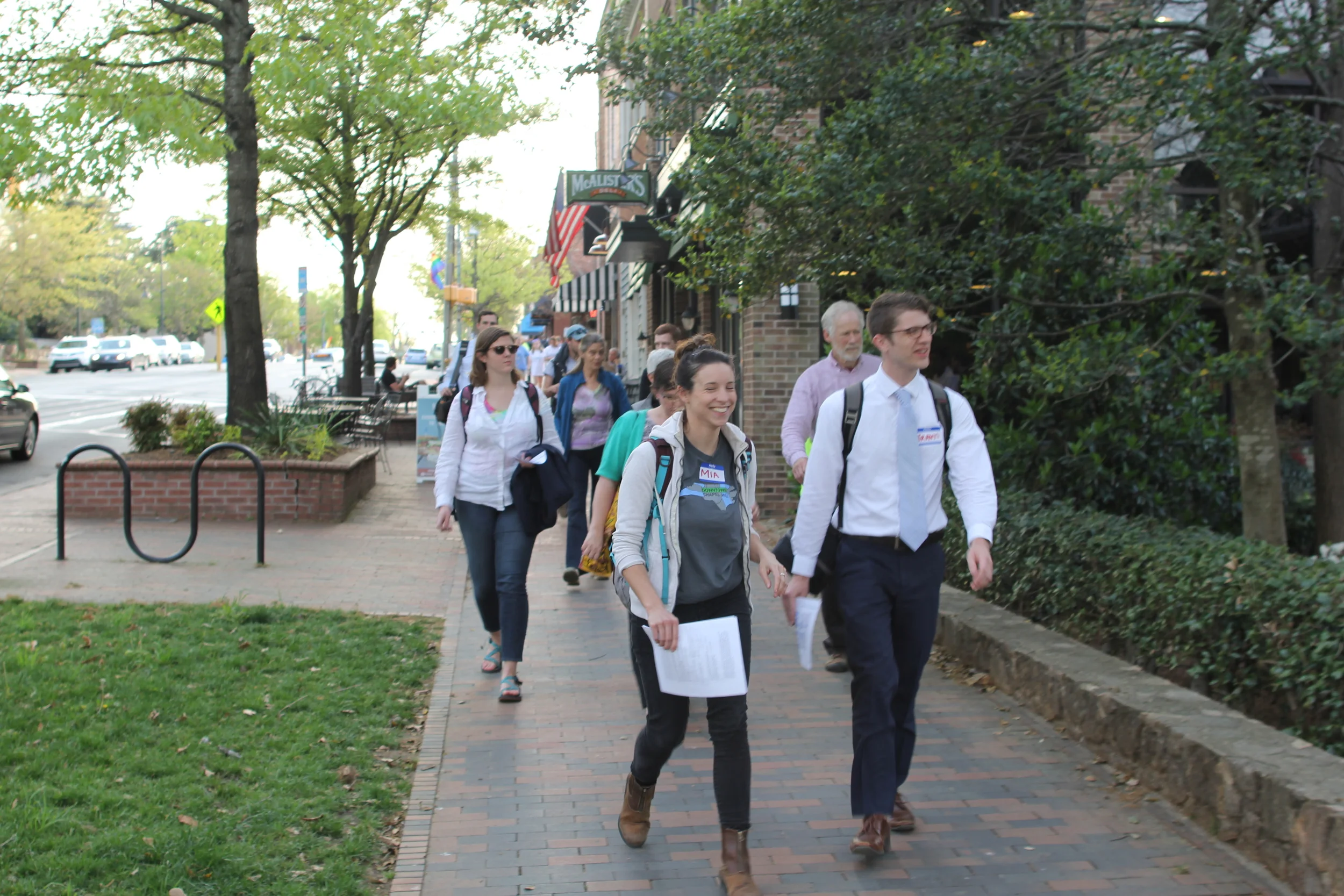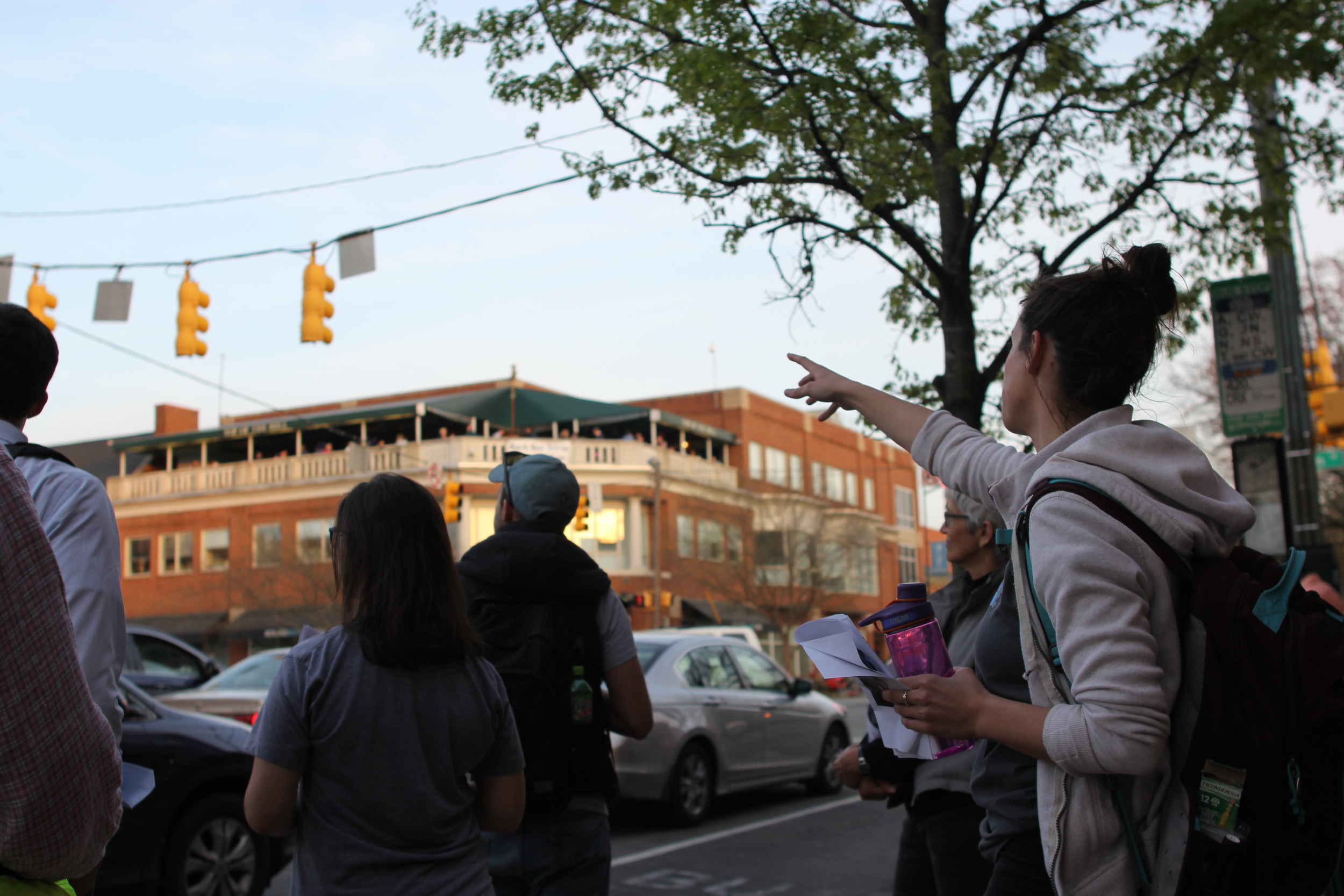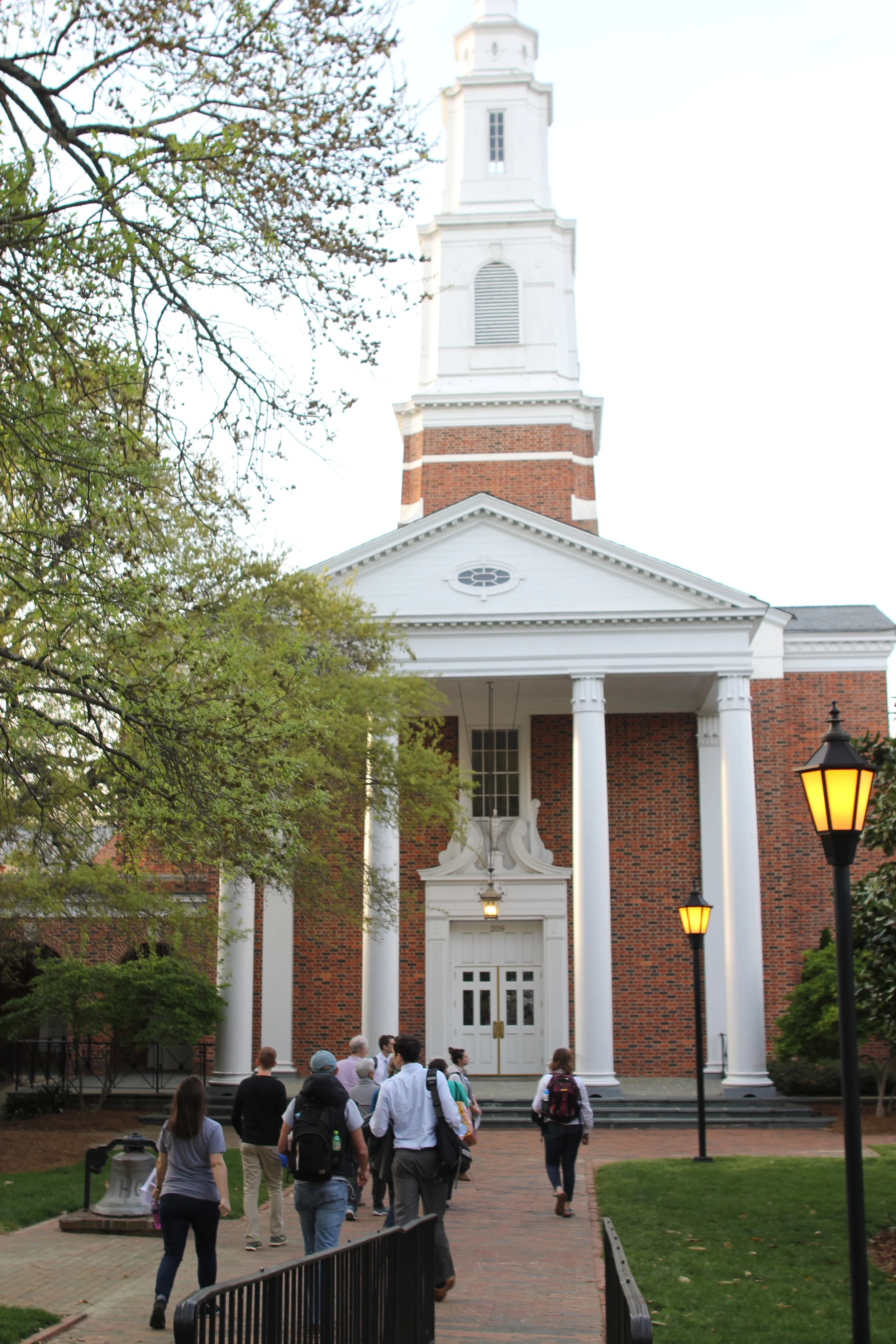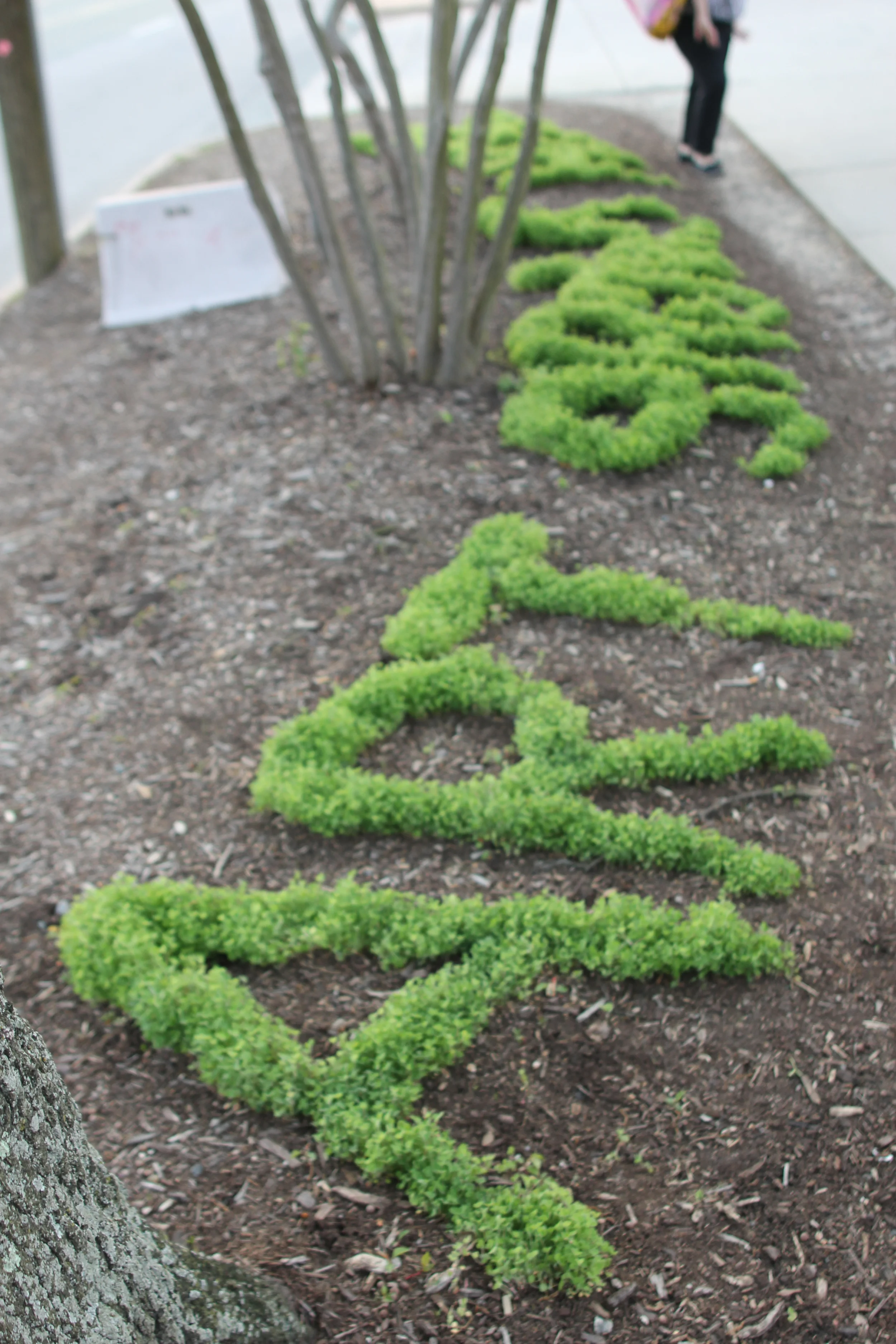Interview with Mia Candy-Host of the Jane Jacobs Walk series at Chapel Hill and Carrboro, North Carolina
/Mia Candy
Tell me a little bit about yourself, how you came to know about Jane Jacobs Walks?
I’m a recent graduate of UNC Chapel Hill, where I got my masters in City and Regional Planning. My work focuses on neighborhood planning, placemaking, and public space, particularly in low-income communities. I’m interested in dynamic community engagement techniques, including walking tours, which led me to run a series of Jane Jacobs Walks for my final graduate school masters project. The timing was also perfect as it was an opportunity to celebrate Jacobs’ 100th birthday.
Can you tell me a little bit more about the Walks you did at Chapel Hill?
I collaborated with the Chapel Hill Downtown Partnership to run a four part event series under the name Dream up Downtown. Two of the walks explored the public spaces in Chapel Hill and Carrboro, and the other two looked at the hidden elements of the built environment that give our cities a unique sense of place. The ‘hidden elements’ walks were inspired by the 99% Invisible Podcast. Local community members volunteered to help lead the walks, and in the end we had over 50 people participate in the event series. The walks garnered attention from the Mayor and other City officials, and as a result we ran an additional walk for City employees. We’ll also be running a couple more in the fall for incoming UNC students in the Planning and Public Administration programs.
Your walk focused on the small details of a city, and you mention the inspiration being the podcast 99 Percent Invisible, but was this also inspired by Jane Jacobs’ writings?
Absolutely. Jane Jacobs’ texts and ideas are ubiquitous in the study of planning, but I was curious about how well her theories are implemented in contemporary planning practice. In re-reading her work, it struck me that she believed deeply in the organic nature of cities, and that chaos is often the source of vibrancy, dynamism and a unique sense of place. One of the results of this chaotic, organic growth is that cities are often characterized by relics of the development process – things like historic architecture; idiosyncratic street designs; and aging infrastructure that keeps a city running, but goes unnoticed day to day. These elements of the built environment are central to the 99PI podcast, and also to Jacobs’ love for urbanism, which is how I came to develop the theme for the walks.
What are your goals for the Chapel Hill community as well as the participants of these walks?
Events like these have the power to encourage increased interest in and engagement with the future of our downtown. My hope is that the spring 2016 series was the beginning of a conversation about what is and isn’t working about our local public spaces, and who exactly they’re designed for and used by. I’d like to see a movement towards public spaces that are more inclusive for all members of the Chapel Hill community. I’m developing a guidebook for local community members who would like to organize and host their own walks. The guidebook is similar to the one provided by the Jane Jacobs Walk organization, but focuses on the unique nature of the Chapel Hill Community. By creating this resource I hope to ensure that Jane Jacobs Walks can continue in Chapel Hill in perpetuity.
Do you have any stories from your Jane Jacobs Walk?
On the first day of the event series we ran one of the public space walks and two little girls attended with their parents. We were walking through an alleyway between two buildings, and it was pretty overgrown. We were discussing what works and doesn’t work about the alley, and how it could be improved. During the conversation I overheard one of the kids say that she liked the alleyway as it was, with all the overgrowth, because it makes the space interesting. It was a great moment for me because this kid probably had one of the most insightful observations on the walk, and had unintentionally captured Jacobs’ ideas about organic growth and chaos in cities. It was also fascinating to watch the way in which the kids found creative ways to use and play in spaces that would otherwise be considered dead or underutilized. It was an experience that taught me to pay closer attention to how children interact with space – they have natural instincts that say a lot about the potential of the place.
We want to give a huge thanks to Mia Candy for doing this interview with us, and for her continuing dedication to her community at Chapel Hill as well as Jane Jacobs Walks.
If you’re interested in some of the things mentioned in this blog post here are some links:
http://www.janejacobswalk.org/search?q=chapel%20hill&f_collectionId=56ba31d52eeb81ff86614061



